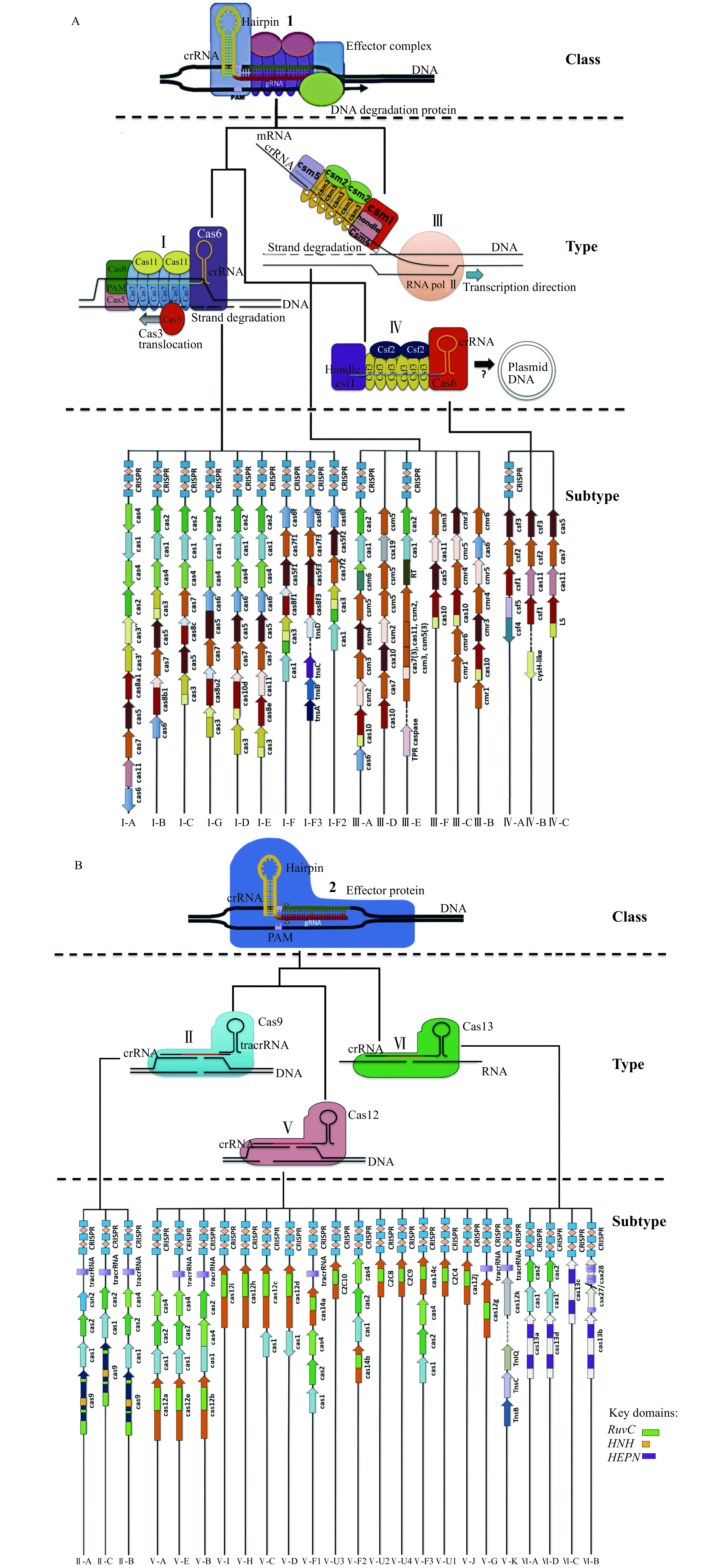Figure 3.

Outline of the current parsimonious classification schemes for CRISPR-Cas systems.
At the highest level, all systems are categorised into either class 1 (A) or 2 (B) based on the presence of either monomeric or multisubunit interference complexes. Each system is then typed based on the mechanism of degradation facilitated by the effector proteins, which corresponds to the catalytic mechanism used by the effector proteins for degradation. Each type is then assigned a variant number based on the lineage of the effector protein and further subtyped based on the co-occurrence of CRISPR-associated accessory proteins unique to each system.
